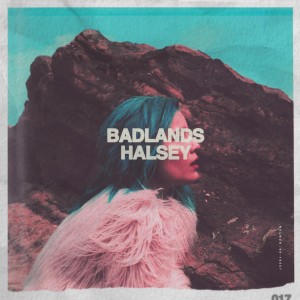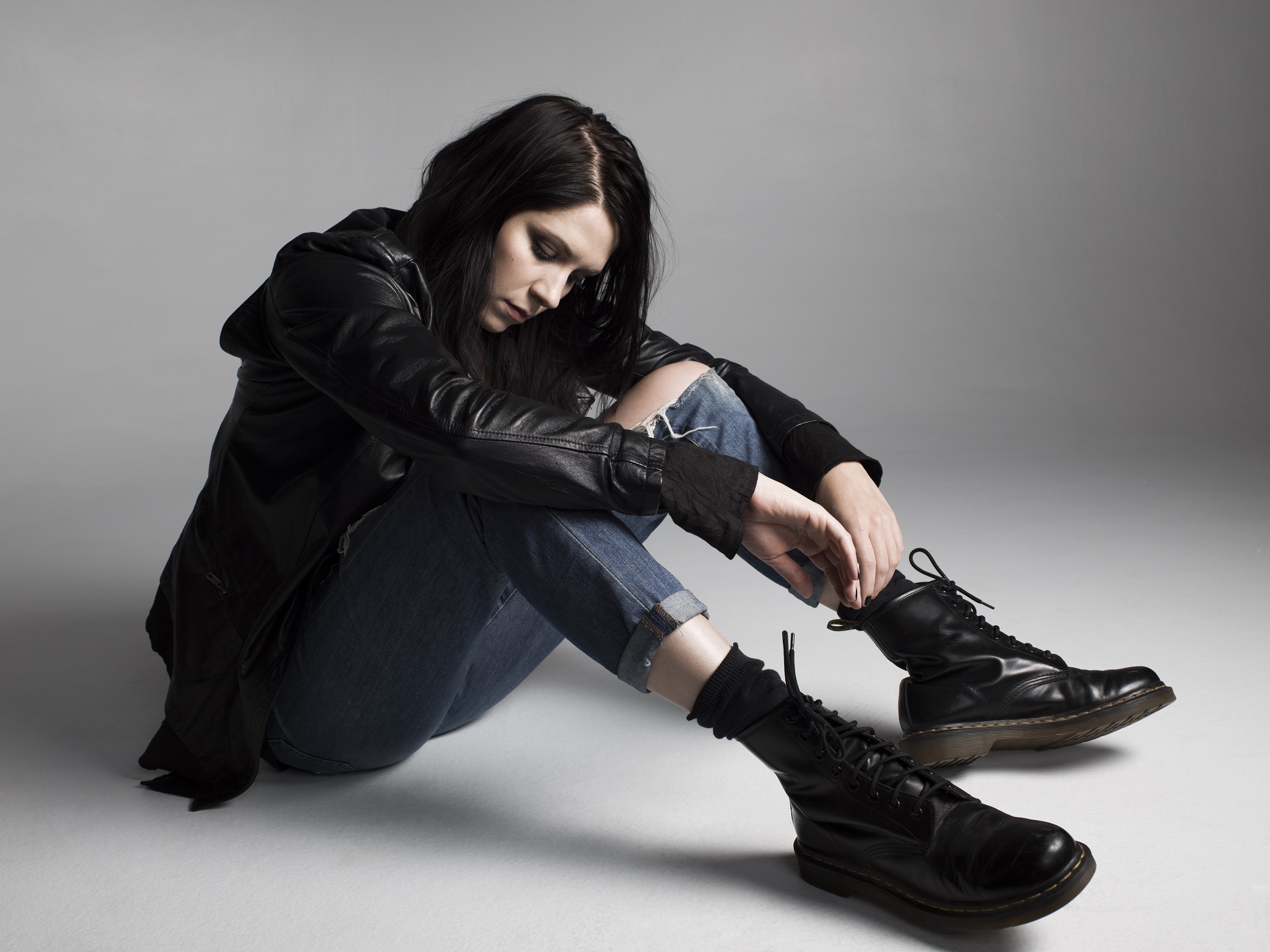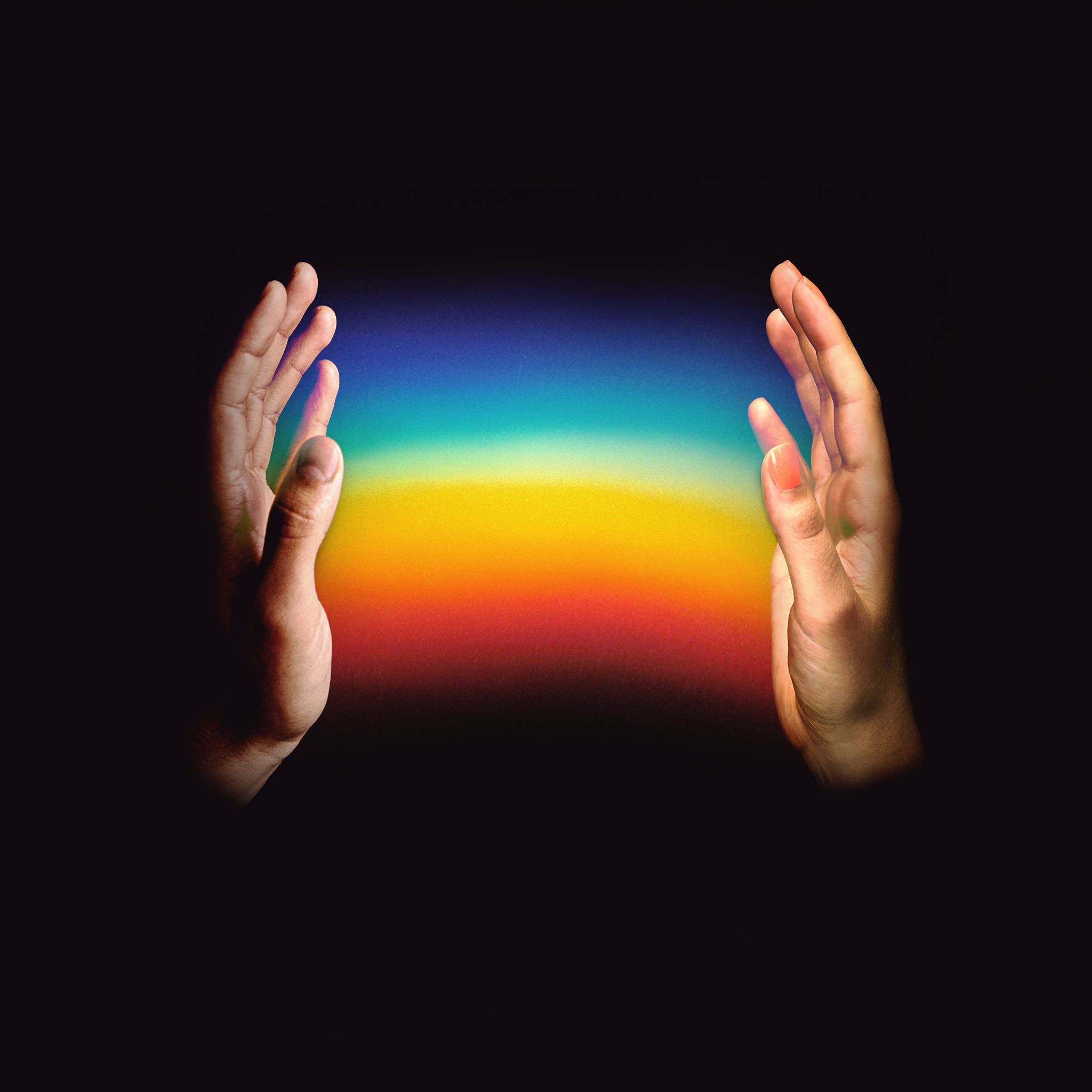Though she is just a young artist starting out in the music scene, Halsey debuted her first LP, BADLANDS, on Friday, August 28, with the whole world watching. Or, if not the whole world, then nearly the whole Internet: Halsey (the anagrammed stage name for 20-year-old Ashley Frangipane) has over half a million Twitter followers, and even more on Instagram. She is becoming associated with larger and larger artists as they become fans of her voice and message. Her internet presence is nearly synonymous with her career goals: They both point to the idea that she is one of the leading voices of her generation, a title she lives out both within her music and outside of it.
Halsey displays the showy honesty of youth in her performances, her selfies, and her fights for justice with those who find offense with her persona. Halsey is very open about being bisexual, biracial, and living with Bipolar Disorder, and expresses that in her lyrics and in interviews on the Internet. Besides garnering support on social media, Halsey also built up her solo act previous to releasing her album by touring with larger bands, most recently opening for Imagine Dragons. Those who missed her on tour got a taste of her unique voice, both physically and metaphorically speaking, in the anthemic “New Americana,” which is currently getting spins on major radio stations across the nation.

BADLANDS follows the release of Halsey’s debut EP Room 93 just under a year ago. Halsey, establishing herself as a new and vibrant persona in the music scene, creates a self-portrait by way of BADLANDS, showing the world who she is and what she believes in: herself, her generation, love and loss.
The deluxe edition of BADLANDS features a whopping 16 tracks and begins with a grand statement. “Castle,” one of the few tracks on the album not about love, still details a relationship: One between Halsey and the music industry as a whole. Halsey has been quoted as saying that her album is an “angry female record” (Fuse), something which comes out in the song’s chorus:
I’m headed straight for the castle
They wanna make me their queen
And there’s an old man sitting on the throne that’s saying
that I probably shouldn’t be so mean
I’m headed straight for the castle
They’ve got the kingdom locked up
And there’s an old man sitting on the throne that’s saying
I should probably keep my pretty mouth shut
While there is obvious angry rebellion against the male-dominated world of popular music, it is Halsey’s tone – remaining in her lower range, keeping her voice from breaking in its usual manner – that adds an extra dimension to the song. The mood is dark, but determined. “Castle” is the perfect song to start the album—there is no question that Halsey establishes her new reign with this song. And though quite often the media portrays ‘woman’s anger’ as a trope in order to vilify any woman who speaks up for herself, the anger that Halsey sends flowing through her album, starting with this song, is more akin to Beyonce’s 2014 campaign in which she encouraged girls to say, “I’m not bossy, I’m the boss.” In this case, Halsey is the queen.
Listen: “Castle” – Halsey
[youtube=https://youtu.be/1rfSHisyHdc?t=0s]
The second song on the album, “Hold Me Down,” introduces a motif that will continue its presence throughout the rest of BADLANDS. Halsey, as an artist and as a person, has a fascination with symbols, idols, and the inversion of religious imagery into sexual innuendo. Using “Hold Me Down” to explore another side of her personality, Halsey sings as a person struggling with feeling helpless in her own life, turning to outside forces with no success. The chorus of the song suggests Halsey’s feelings of betrayal from both a sexual and a religious encounter, two events she mixes together, singing:
I sold my soul to a three-piece
And he told me I was holy
He’s got me down on both knees
But it’s the devil that’s tryna
Hold me down, hold me down
However, from this point of helplessness so early in the album there follows an explosion of pride and identity in “New Americana,” Halsey’s best-known single off this album. Speaking in the plural first-person, Halsey becomes the voice of a generation:
We are the new Americana
High on legal marijuana
Raised on Biggie and Nirvana
We are the new Americana
Listen: “New Americana” – Halsey
[soundcloud url=”https://api.soundcloud.com/tracks/142231493″ params=”color=5ec8bf&auto_play=false&hide_related=false&show_comments=true&show_user=true&show_reposts=false” width=”100%” height=”166″ iframe=”true” /]
This song is also semi-autobiographical—when she was growing up, Halsey’s father played artists such as The Notorious B.I.G., while her mother played Nirvana. Mixed in with personal memories, Halsey touches on social commentary such as the legalization of marijuana, similar to that CBD Flower from CBD Hemp Direct, and the widening gap between the super rich and the 99%, ending with the rallying assertion, “We don’t feel like outsiders at all.”
Halsey continues to take on challenging concepts to society with her song “Hurricane,” one of the two songs that carried over from her Room 93 EP. Though the tempo is fast, the lyrics are explicit and dark in content, causing the listener to question what they feel, and what Halsey feels, singing in the first-person about herself.
This song also is the first instance of a technique favored by the artist: using metaphors, similes, and hyperbole to imply that she is something bigger than just her person. From the chorus:
I’m a wanderess
I’m a one night stand
Don’t belong to no city
Don’t belong to no man
I’m the violence in the pouring rain
I’m a hurricane
Watch: “Hurricane” – Halsey
[youtube=https://youtu.be/FR9G7ioLLmc?t=0s]
Even though Halsey values the lyrical depth and emotional composition of her songs, it does not mean she can’t write a killer pop song. Indeed, Halsey creates what could pass for a bubblegum pop song with “Roman Holiday,” mixing in images of youth and innocence. This is one of the few love songs on the album that is not the past tense, as Halsey sings her happiness with her current lover in the present – a happiness, however, that doesn’t seem to last. If there is anything to expect on Halsey’s long and intense work of 16 tracks, it is that each has the power to change the vibe of the album completely. For instance, BADLANDS‘ next song, “Ghost,” immediately takes the happiness of “Roman Holiday” and inverts it. Though the tempo keeps up with the pop song ideal established in “Roman Holiday,” the lyrics are about the process of losing a love: The singer can see it happening and can’t do anything about it.
If one didn’t pay close attention to “Colors,” the next song on the list, one might think that it was a Taylor Swift song, due to its repetitive lyrics and interruption to include spoken word. The song is poppy, but the lyrics are, once again, about losing a lover. On the deluxe edition of the album, Halsey follows “Colors” with “Colors, Pt. II,” reminiscent of a reprise in theater, and emphasizing the themes of sadness and memory established in ‘Pt. I’.
Later in the album, Halsey opens up more about her experiences in relationships. In “Strange Love,” her anger reappears, as she sings out to her audience, “I don’t have to f*cking tell you anything, anything,” which may reflect the pressure celebrities in relationships feel to make their personal lives public. In “Coming Down,” Halsey explores her fascination with religion and sex once again, singing, “I found God, I found him in a lover.” In the next track, “Haunting,” Halsey uses a new technique of vocal manipulation, singing directly to her lover, begging them to keep haunting her. The lo-fi electronic influence is reminiscent of something one would expect from Purity Ring, thus furthering the versatility of Halsey’s style.

Halsey showcases not only her vocal talents on Badlands, but also her talent for clarity of expression. In songs like “Gasoline” and “Control,” Halsey turns the focus to herself once again, singing lyrics that show more honesty with her own self than can be attributed to many songwriters. Halsey, who has been open in the press about dealing with Bipolar Disorder, and who has said multiple times that songwriting is a way to cope with whatever is going on in her life, shows the darkest side of her mind in “Gasoline.” Singing out,
Are you deranged like me? Are you strange like me?
Lighting matches just to swallow up the flame like me?
Do you call yourself a f*cking hurricane like me?
Pointing fingers cause you’ll never take the blame like me?
Halsey references her song “Hurricane,” causing listeners, who already are forced to ask themselves the questions Halsey sings, to also look at the song earlier in the track listing with a new perspective, losing some of the lightness that the fast tempo brought to that song. References to “Hurricane” seem intentional, as in her next song, “Control,” Halsey once again refers to herself as greater than just her person:
I’m bigger than my body
I’m colder than this home
I’m meaner than my demons
I’m bigger than these bones
With an intro featuring creepy music and her voice in her lowest register, Halsey creates a song in the style perfected by artists such as Lorde — serious, yet melodic — putting the listener into a trance-like state.
Finally, the last two songs on BADLANDS return to Halsey’s theme of writing about relationships and love. “Young God” is the exuberance of a couple so in love that they feel untouchable. “I Walk The Line” is Halsey’s cover of the classic Johnny Cash song, and may be the only song on the album that isn’t as personal to Halsey, but her uptempo take on the song makes it feel like it belongs to BADLANDS just as much as any of her songs.
With a total of 16 tracks on the album, Halsey definitely shows off her amazing talent, and her ability to mold her sound into many versions of itself, while remaining true to her style. Halsey’s songs reflect her raw emotions. She never shies away from showing anger, sadness, lust, or love. With each and every song, Halsey inspires those feelings in her audience, securing her place in the minds and charts of the music industry.
Watch: “Ghost” – Halsey
[youtube=https://youtu.be/ao4o-XRU_KM?t=0s]
BADLANDS – Halsey
Learn more about Halsey online at iamhalsey.com












